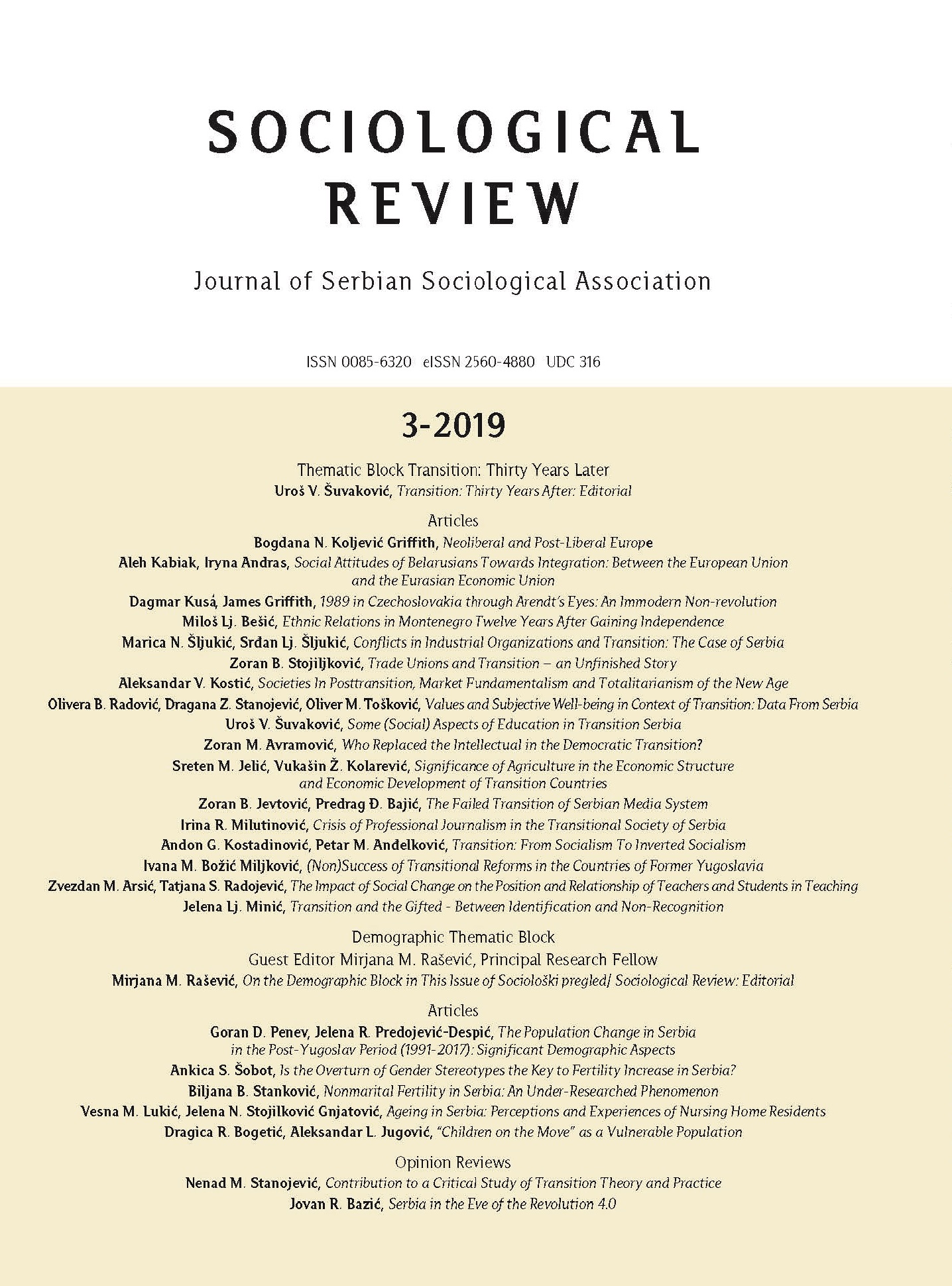The Population Change in Serbia in the Post-Yugoslav Period (1991-2017): Significant Demographic Aspects
The Population Change in Serbia in the Post-Yugoslav Period (1991-2017): Significant Demographic Aspects
Author(s): Goran D. Penev, Jelena R. Predojević DespićSubject(s): Social Sciences, Sociology, Demography and human biology
Published by: Српско социолошко друштво
Keywords: population decline;fertility;mortality;migration;population ageing
Summary/Abstract: The aim of the paper is to consider the population trends in Serbia and their components over the last three decades. It is a period of profound political, economic and social transformations. The analysis is based on vital statistics data (1991-2017), the 1991, 2002 and 2011 census data, as well as the official and the authors’ estimates. In this period, some of the prior long-term processes continued (decline in fertility, decrease in mortality, emigration). However, some new phenomena and processes emerged (population decline, negative population growth, and immense forced migration). The authors point to the interdependence of the analyzed changes in the components of demographic growth and the long-term population ageing process and conclude that these are the most important components that will decisively influence the demographic development of Serbia in the decades to come.
Journal: Социолошки преглед
- Issue Year: 53/2019
- Issue No: 3
- Page Range: 1183-1216
- Page Count: 34
- Language: English, Serbian

